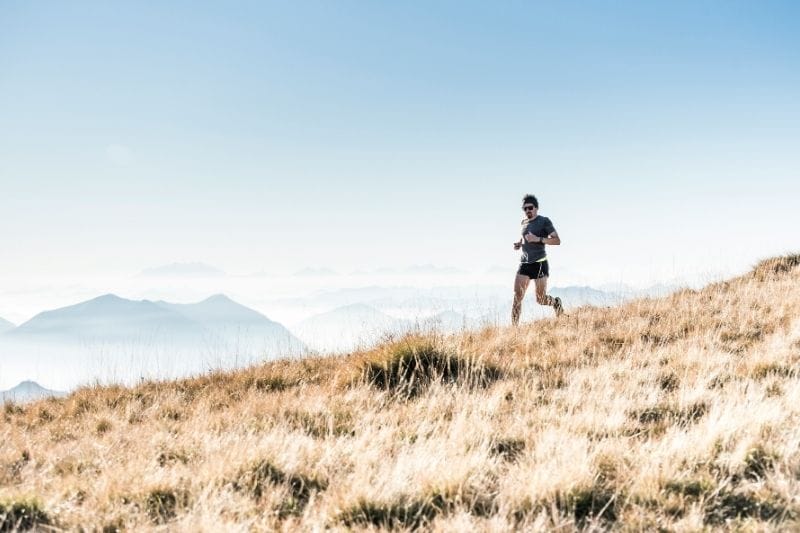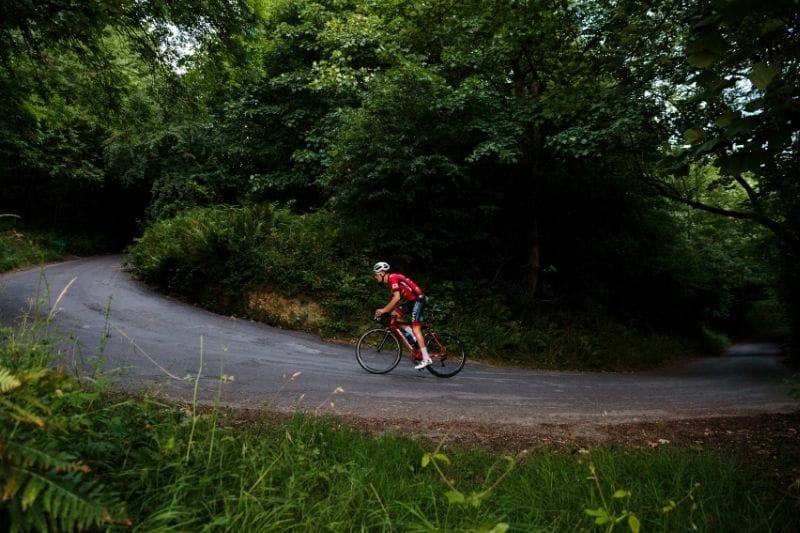When I first started cycling again, over a decade ago, my first ride back was about 30 minutes – and I ached for days! Since then, my longest ride has been from London to Manchester in one go, which was approximately 220 miles (360km). So, at the risk of sounding like a show-off, I’d like to think I know a fair bit about starting as a newbie and building up to become an endurance cyclist!
Hitting the 100km mark is a huge achievement in any cyclist’s journey. Whether you’re training for an organised event, a charity ride, or just aiming to push your limits, reaching triple digits on two wheels is something to be proud of. But if you haven’t done it before, it can also feel slightly intimidating. The good news? With the right approach, anyone can build up to 100km without burning out – and actually enjoy the process along the way. Here’s how to make it happen, step by step.
100km Cycling Training Plan:
Build Your Base Mileage Gradually
The biggest mistake newer cyclists make when aiming for 100km is ramping up too quickly. While the enthusiasm is great, your body needs time to adapt to longer distances. Start by increasing your weekly long ride by about 10% each week. For example, if your longest ride is currently 40km, aim for 45km next week, then 50km, and so on.
This progressive build gives your legs, lungs, and even your saddle area time to get used to the effort. It also reduces your risk of injury and keeps your motivation high. Remember, consistency is more important than heroic one-off rides. Think of your endurance like a bank account – you’re making regular deposits, not trying to win the lottery.
Schedule One Long Ride Every Week
Your long ride is the cornerstone of your training plan. This is the session where you’ll build endurance, learn how to pace yourself, and test your fuelling strategy. Aim to do this ride once a week, ideally on the same day so it becomes a routine.
Keep the pace comfortable – you should be able to hold a conversation without gasping for air. It’s not about speed; it’s about time in the saddle. Use these rides to explore new routes, listen to podcasts or music (if it’s safe only!), and enjoy the scenery. Make them something to look forward to, not dread.
Mix Up Your Midweek Rides
While your weekly long ride is key, your shorter rides during the week are just as important. These can include:
Recovery Rides: Flush out the legs and aid recovery
These rides are easy, short spins done at a very low intensity. The aim is to get the legs moving without adding stress.
Example: 30 minutes at a gentle pace on flat roads or the turbo trainer, keeping your heart rate low and legs spinning freely. You should feel better after than you did before.
Interval Sessions: Boost fitness and climbing strength
These are short, intense bursts of effort followed by rest periods. They’re great for building power, improving your ability to handle hills, and increasing cardiovascular fitness.
Example: 10-minute warm-up, then 5 x 3-minute hard efforts (around 8/10 effort level) with 2 minutes of easy spinning between each. Cool down for 10 minutes.
Tempo Rides: Practise steady pacing and aerobic endurance
Tempo rides are moderate-intensity efforts that help you ride at a strong but sustainable pace. They build aerobic capacity and train you to hold a consistent effort over time.
Example: After warming up, ride for 30–45 minutes at a pace where you can still talk but not sing – around 6–7 out of 10 in effort. Cool down for 10 minutes.
Hill Sessions: Improve power and stamina
Riding hills builds leg strength and stamina, both essential for a 100km ride, especially if your route includes elevation.
Example: Find a local hill that takes 2–4 minutes to climb. Ride up at a steady but challenging pace, recover on the way back down, and repeat 4–6 times.
Even 30–60 minute sessions can add up. The variety helps prevent boredom, builds a more rounded cyclist, and improves your ability to recover. Plus, it keeps the training fun and engaging, which makes you more likely to stick with it.
100km Cycling Training Week – Sample Plan (3 Rides + 1 Gym Session)
Monday: Rest or light walk/stretch
Recovery-focused. Give your legs a break after the weekend’s long ride.
Tuesday: Short Interval Ride (45–60 mins)
Example: 10 min warm-up, 4 x 4 mins hard with 2 mins easy spin between, 10 min cool-down.
Builds fitness, power, and climbing ability.
Wednesday: Gym Session (Full Body Strength or Core + Mobility)
Focus on compound lifts (e.g. squats, deadlifts, presses) with moderate weight.
Include core work and mobility stretches to support endurance and prevent injury.
Thursday: Tempo Ride (60 mins)
Ride at a steady, moderate pace you can hold for an hour – this trains pacing and aerobic endurance.
Optional: include a couple of short hills.
Friday: Rest or Active Recovery
Optional: 30 mins easy spin, yoga, or a walk. Helps prepare for the weekend.
Saturday: Long Ride (Progressively Increasing Distance)
Start with a distance you’re comfortable with and increase by ~10% each week.
Keep the pace conversational. Practise fuelling, hydration, and pacing.
Example progression:
Week 1 – 45 km
Week 2 – 50 km
Week 3 – 55 km
Week 4 – 60 km (then a recovery week)
Sunday: Rest or Gentle Cross-Training
Easy walk, swim, or yoga – something enjoyable and low effort.
100km Cycle Ride Nutrition & Recovery:
Practise Fuelling And Hydration Strategies
One of the most underrated parts of long-distance cycling is nutrition. Running out of energy halfway through a long ride is not fun – and it’s totally avoidable with a bit of planning.
Start fuelling before you feel hungry. A good rule of thumb is to eat a small snack every 40–60 minutes. This could be a banana, an energy bar, dried fruit, or even a jam sandwich. Everyone is different, so experiment during training to find what sits well with your stomach. If you’re also trying to lose weight, it’s important not to under-fuel still – going too low on energy can lead to poor performance and a harder recovery.
Hydration is just as important. Sip water regularly, even if you don’t feel thirsty. On rides over 90 minutes, consider using an electrolyte drink to replace lost salts and minerals – especially in warmer weather or during tough efforts.
Listen To Your Body (And Your Mind)
Training fatigue is normal – some days your legs won’t feel great, and that’s part of the process. But there’s a difference between feeling tired and feeling completely wiped out. If you’re dragging through every session, struggling to recover, or losing motivation, it could be a sign you need a rest.
Don’t be afraid to take an extra day off or swap a ride for a walk or stretch session. One missed ride won’t ruin your training, but pushing through when you’re overtired can set you back. Likewise, mental burnout is real – take breaks when needed and make sure you’re still enjoying the journey.
Build In Recovery Weeks
Every 3–5 weeks, it’s smart to cut back on your mileage. This gives your body a chance to recover, absorb the training, and come back stronger. These recovery weeks don’t mean no riding – just lighter sessions, shorter distances, and no hard efforts.
Use this time to catch up on sleep, stretch more, or enjoy social rides at an easy pace. Trust the process – rest is when the magic happens.
On the Day of Your 100km Ride:
Get Organised For Ride Day
As your training builds, start thinking ahead to the big day. Will you ride solo or with a group? Will it be hilly or flat? What’s the weather likely to be? Plan your route in advance, check your bike is in good condition, and make a checklist of everything you’ll need: food, fluids, layers, tools, and so on.
Practice using all of this on your training rides so there are no surprises. Make sure your saddle, shoes, and bike fit are comfortable – small niggles over short distances can turn into big problems on long rides.
Pace Yourself From The Start
It’s easy to get caught up in the excitement and go out too fast on the day. The adrenaline is pumping, your legs feel great… and then you hit a wall at 70km. Don’t fall into that trap. Don’t let the red mist take over!!
Start steady, settle into a rhythm, and remind yourself it’s not a race (unless it actually is!). Aim for even pacing throughout – and if you’ve done your training, you’ll still have energy left in the tank for the final 10–20km.
Enjoy The Ride – You Earned It
By the time you reach the start line of your 100km ride, you’ll already have done the hardest part: the training. You’ve built your endurance, practised your fuelling, and learned to listen to your body. Now it’s just about putting it all together and enjoying the experience.
Take in the scenery, celebrate the small milestones as you go, and don’t forget to give yourself a huge pat on the back when you hit that 100km mark. You’ve earned it.
You’ve got this. Ride smart, fuel well, and enjoy the journey. Your first 100km is just the beginning.
Summary: Your First 100Km Ride Checklist
Build base mileage gradually
- Increase your weekly long ride by ~10%.
- Focus on consistency – small, steady progress beats one-off heroics.
Weekly long ride routine
- Do one long ride per week at a conversational pace.
- Use it to test nutrition, pacing, and simply enjoy the ride.
Mix midweek sessions
- Include recovery spins, intervals, tempo efforts, and hill work.
- These shorter, varied rides boost fitness, prevent boredom, and aid recovery.
Practise fuelling & hydration
- Eat every 40ish minutes – snacks like bananas or energy bars.
- Experiment on longer training rides.
- Drink regularly; for rides over 90 minutes, add electrolytes, especially in heat.
Listen to your body & mind
- Watch for overtraining – persistent fatigue, poor recovery, lost motivation.
- Don’t hesitate to rest, swap a ride for light activity, or take an extra day.
Schedule recovery weeks
- Every 3–5 weeks, dial back mileage and intensity.
- Do easier rides, stretch more, and sleep well – recovery fuels progress.
Organise ride day logistics
- Plan route, group vs solo, and check weather.
- Ensure bike condition, nutrition, kit, tools – practise these in training.
Pace smart from the start
- Resist the adrenaline rush – start steady and aim for even pacing.
- A calm start leaves energy for the final stretch.
Enjoy the journey
- You’ve done the hardest part – training.
- Soak in the scenery, celebrate milestones, and relish reaching 100km.
I can help you…
I am a Fitness, Strength and Nutrition Coach for sports events and athletes – helping people like you to get fitter, stronger and faster:




